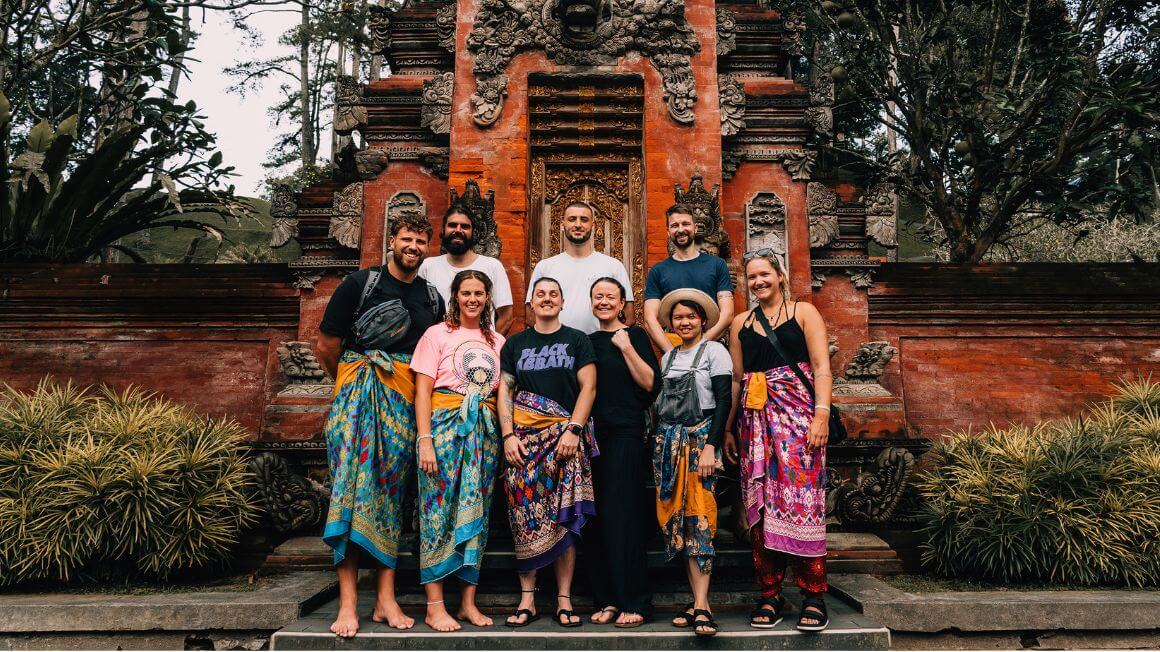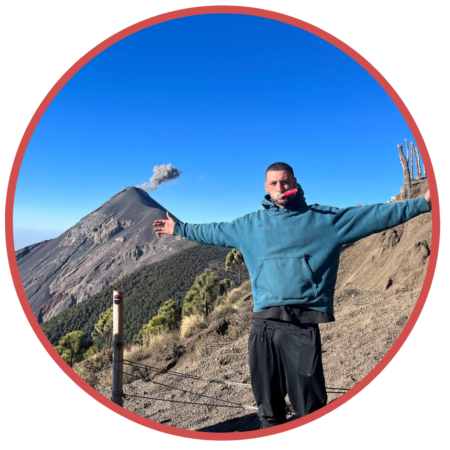Komodo dragons, orangutans, rhinos, whale sharks, lush rainforests, wicked waterfalls and tremendous volcanoes are all the kinds of things that you can expect to find in the national parks in Indonesia.
Indonesia boasts a remarkable 55 national parks and each park possesses its own unique ecosystems, geography and collection of species. Imagine Orangutan spotting in Borneo and hiking active volcanoes in Bali all on the same holiday!
All of Indonesia’s national parks guarantee a spellbinding experience for each and every person who visits them. Activities such as hiking, wildlife watching, snorkelling and ATV riding are all commonplace here.
From personal experience, I can truly say whether you’re a backpacker, nature lover or an adrenaline seeker that no visit to Indonesia is complete without a visit to at least a handful of the parks on this list. So strap in and let’s discover the best national parks in Indonesia!
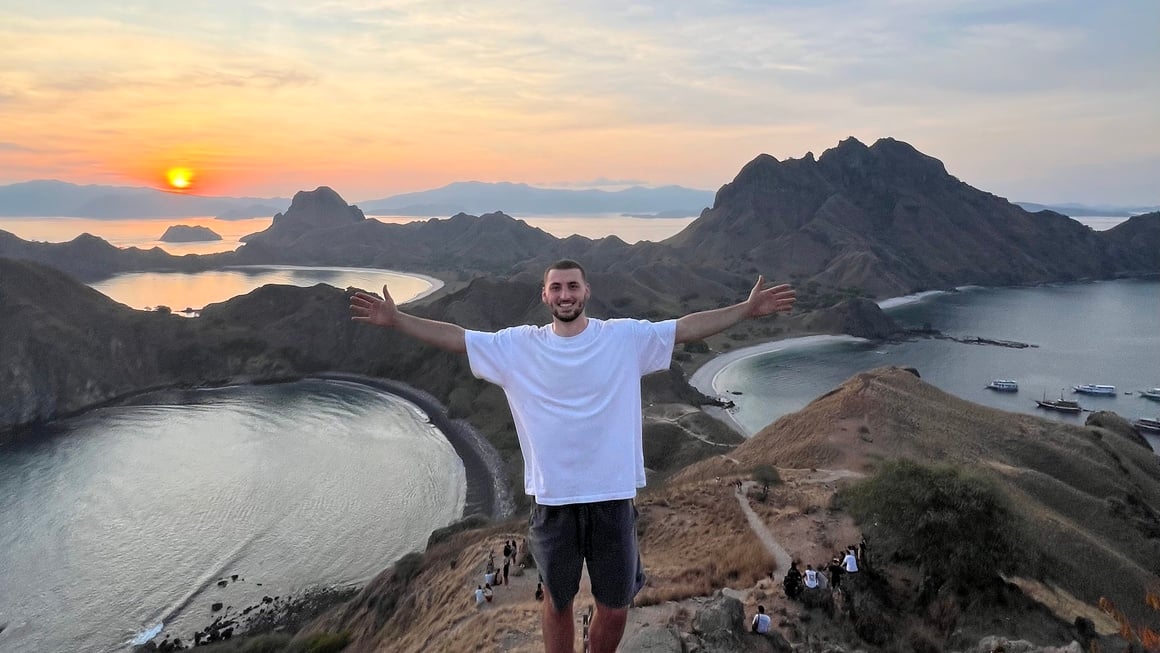
The Broke Backpacker is supported by you. Clicking through our links may earn us a small affiliate commission, and that's what allows us to keep producing free content 🙂 Learn more.
What Are National Parks?
Anyone travelling around Indonesia is sure to come across a few national parks, these things are EVERYWHERE here, but what are they? Well, national parks in Indonesia are diverse, exotic (and most importantly protected) areas of land or sea which hold specific scientific or natural value, interest or beauty.
This very broad definition encompasses parks all over Indonesia’s some 17,000-18,000 islands, many of which have even been awarded UNESCO World Heritage Site Status. Each has landscapes of varying types. In Indonesia’s protected parks you can expect to find volcanic craters, pristine mangrove forests, lush rainforests, shallow marine coral reefs and more!
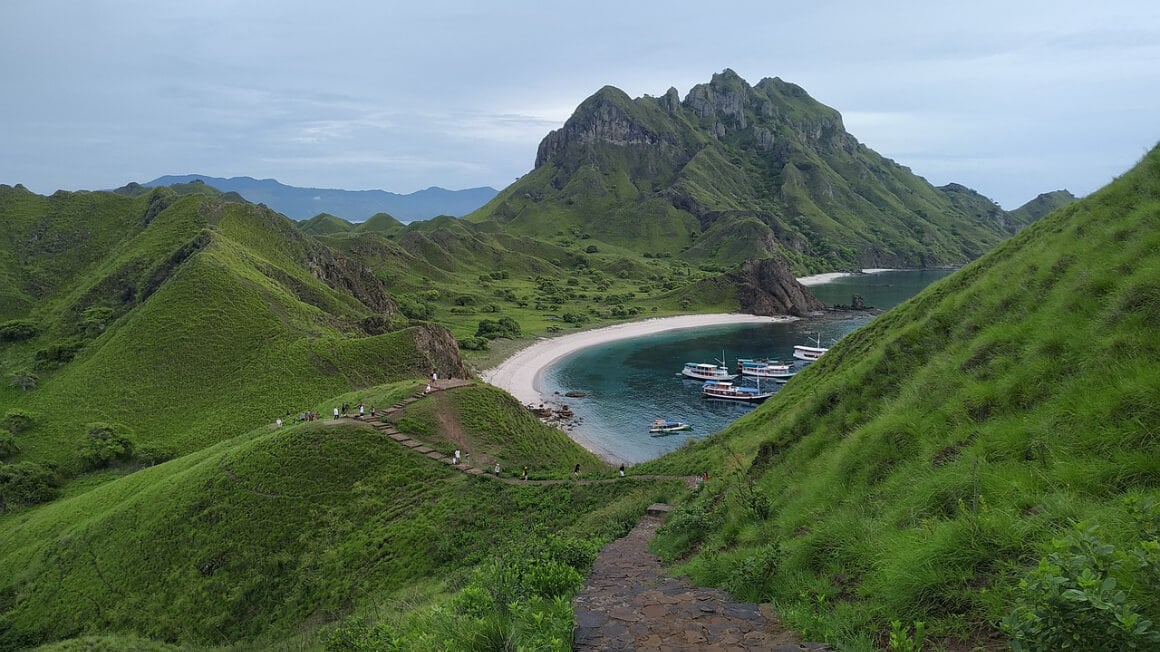
Perhaps the most alluring reason to visit a national park in Indonesia is to witness some of the world’s most magical wildlife. Indonesia boasts an incredibly biodiverse collection of flora and fauna and also holds many endemic (can only be found here) species, making it a bucket list country for wildlife lovers.
Most people are well aware of the natural beauty of Indonesia through its most famous islands, but there’s so much more to this place than just visiting Bali, Java or Sumatra! If you are heading to Indonesia, make sure you find some time to add a few of these parks to your itinerary, you aren’t going to want to miss out.
National Parks in Indonesia
Ok, folks, you may as well start packing your bags for Indonesia already… Once you’ve laid your eyes upon this EPIC list of Indonesia’s best national parks you’re going to be itching to get out there!
1. Komodo National Park
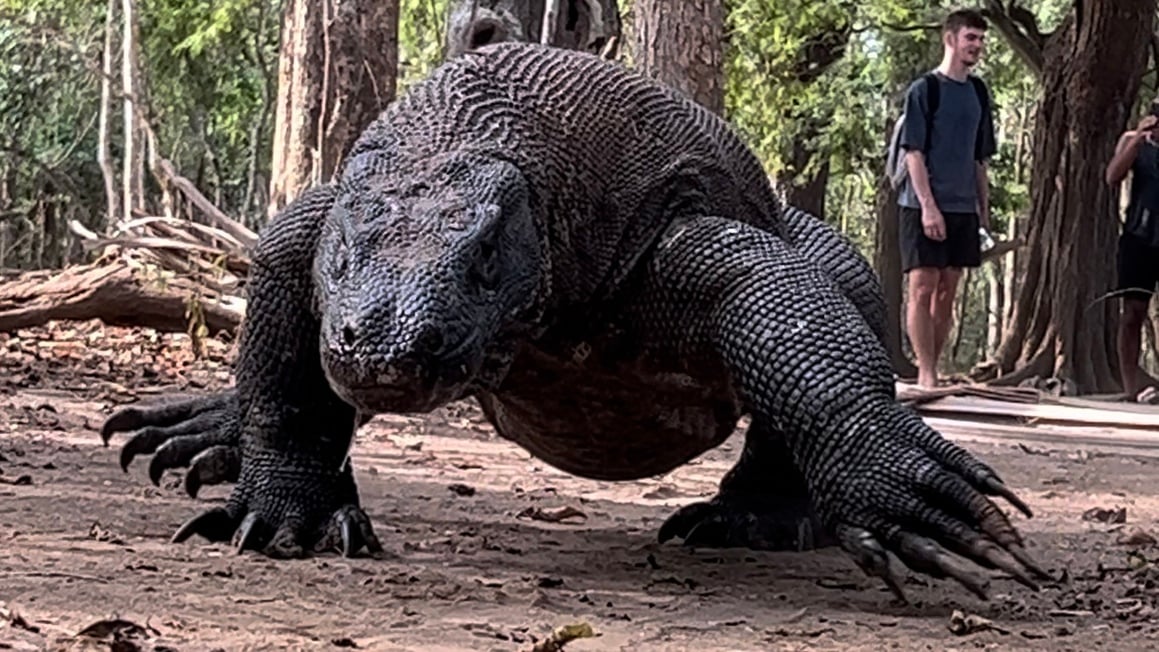
Photo: @joemiddlehurst
- Size: 2,193 km²
- Location: East Nusa Tenggara Province
- Cost of Entrance: 150,000 or 250,000 IDR (weekdays or weekends)
This UNESCO World Heritage Site and national park is comprised of three main islands (Rinca, Komodo and Padar) and is home to some 5,700 individual Komodo Dragons. Of course, Komodo Island is the best place to spot this legendary endemic species, which attracts visitors from all over the globe.
Komodo Dragons (Varanus komodoensis) can grow as large as 3 metres long and weigh as much as 150kg, for their size they are scarily fast and agile. Komodos possess some of the wickedest venom on the planet and can be potentially dangerous to humans, especially during mating season (May-August).
Always visit dangerous national parks with an experienced guide who will keep your trip safe and fun. For peace of mind, I recently visited Komodo National Park during peak mating season (June) which isn’t the best time to visit Komodo Island to see Komodos and still had one of the best days of my life there!
Komodo National Park also hosts an abundance of other wonderful species of wildlife and is especially renowned for its magnificent marine life. Featuring some of the best scuba diving in the world, Komodo is home to manta rays, many types of whales and dolphins and of course, many green turtles.
Pink Beach, Manta Point and Palau Padar on Padar Island are must-visits if you’re heading to Komodo Island. Palau Padar is one of the most stunning viewpoints in all of Indonesia where you can see a white, pink and black sand beach from the same place. Oh, and there’s always an epic sunset too, but be warned, it’s a very sweaty hike up there!
To get to Komodo National Park, many backpackers take a four-day boat trip from Lombok (as I did). The more convenient alternative would be to fly into the nearby airport in Labuan Bajo, Flores and go on a boat tour of Komodo National Park from there.
Where to Stay Near Komodo National Park
The best place to stay near the Komodo National Park area is undoubtedly Komodo Resort. This stunning resort is located on the nearby Sebayur Island with a private beach and on-site diving and snorkelling opportunities. Despite the location being far from Labuan Bajo airport, a free transfer is provided by the resort!
2. Gunung Rinjani National Park
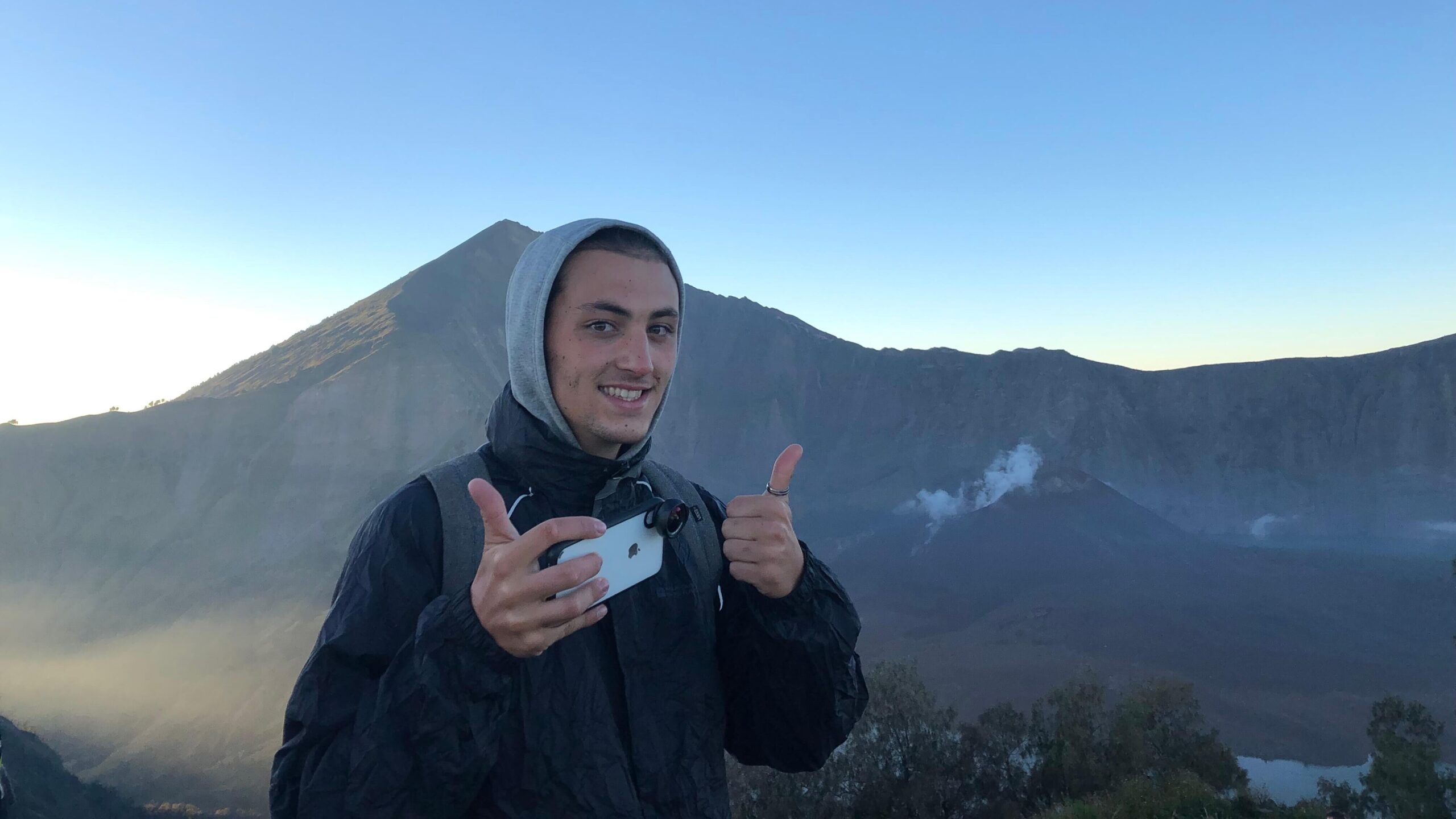
- Size: 413 km²
- Location: Northern Lombok
- Cost of Entrance: 150,000 IDR
Gunung Rinjani National Park on the island of Lombok is an essential excursion for hikers and naturalists who are travelling to Lombok, Bali’s next-door neighbour. Lombok is famous for two things, surfing and Mount Rinjani, so you best bet it was on my Lombok itinerary when I visited back in 2019.
The centrepiece of Rinjani National Park is the glorious Mount Rinjani Volcano – Indonesia’s second tallest volcano standing at a whopping 3,726 metres tall. The gigantic volcano also has a dazzling blue 50km² crater lake in its centre within which lies Mount Barujari. This view makes for some otherworldly photography in the right conditions from the summit or crater rim.
Hiking Mount Rinjani is not an easy feat but boy is it worth it. The trip takes a total of two to three days depending on hiking speed and whether you want to summit Rinjani or just reach the crater rim. You will need to camp for at least one, and ideally, two nights on the volcano to get the best out of the experience and therefore I would recommend hiking Rinjani with a reputable tour guide.
Mount Rinjani National Park is also a fantastic location for stargazing, more specifically at the top of Rinjani itself. When I visited the park I was lucky enough to see multiple shooting stars and the Milky Way galaxy at nightfall.
Mount Rinjani isn’t the only thing to do in this national park in Indonesia though. There are many beautiful waterfalls and wild species such as surili monkeys to spot in and amongst the park too. My favourite waterfalls in Rinjani National Park are Tiu Kelep and Sendang Gile. I’m sure I’m not the only one with that opinion either!
Where to Stay Near Rinjani National Park
Bukit Tiga Lima Boutique Hotel is the best place to stay near Mount Rinjani National Park. This boutique hotel in Sembalun Lawang, Lombok is located just 9km from Mount Rinjani itself and acts as a great base for exploring the park.
3. Gunung Leuser National Park
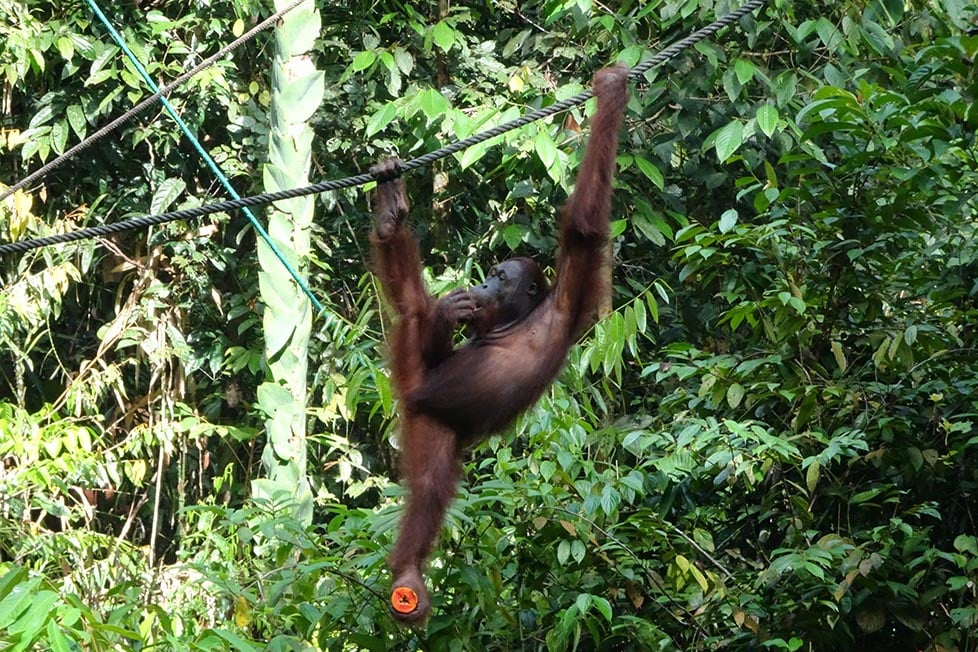
Image: Nic Hilditch-Short
- Size: 7,927 km²
- Location: North Sumatra
- Cost of Entrance: 150,000 IDR
Gunung Leuser National Park in Sumatra is perhaps one of the best national parks in the world for wildlife trekking and spotting. Due to fragmentation and habitat loss, Gunung Leusur National Park is now one of the only remaining places in the world to spot the infamous wild Orangutan. More specifically, the Sumatran Orangutan is an endangered species of Orangutan endemic to Sumatra which is only found in Gunung Leuser National Park and one other park.
It’s not just Orangutans that attract nearly 10,000 visitors and wildlife enthusiasts to this UNESCO World Heritage Site each year. Gunung Leuser National Park possesses a diverse range of ecosystems and geography such as volcanoes, rivers, waterfalls and extremely biodiverse tropical rainforests. These rainforests are home to a host of charismatic, rare, endemic and exotic (sub)species including the Sumatran elephant, Sumatran tiger, Sumatran rhinoceros, Thomas-leaf monkey, siamang and many more.
To get to Gunung Leuser National Park, many people opt for a package provided by a wildlife trekking tour company. You’ll want to fly into the city of Medan and arrange an airport pick-up or make your own way to the gateway town to the park, Bukit Lawang.
When searching for a wildlife trekking company it is of paramount importance that your company of choice is an ethical one. Many reports of elephant riding, poor orangutan treatment and other not-so-ethical behaviours are not uncommon in Sumatra. If you are visiting Gunung Leuser National Park because you love wildlife, PLEASE ensure you support the animals the right way.
Where to Stay Near Gunung Leuser National Park
You will most likely be staying in Bukit Lawang if you are planning on trekking into the Sumatran wilderness of Gunung Leuser National Park. A great place to base yourself is Garden Inn. They offer airport pick-up services and can also help you offer trekking services or find you an alternative, ethical tour company to explore the park with.
4. Bromo Tengger Semeru National Park
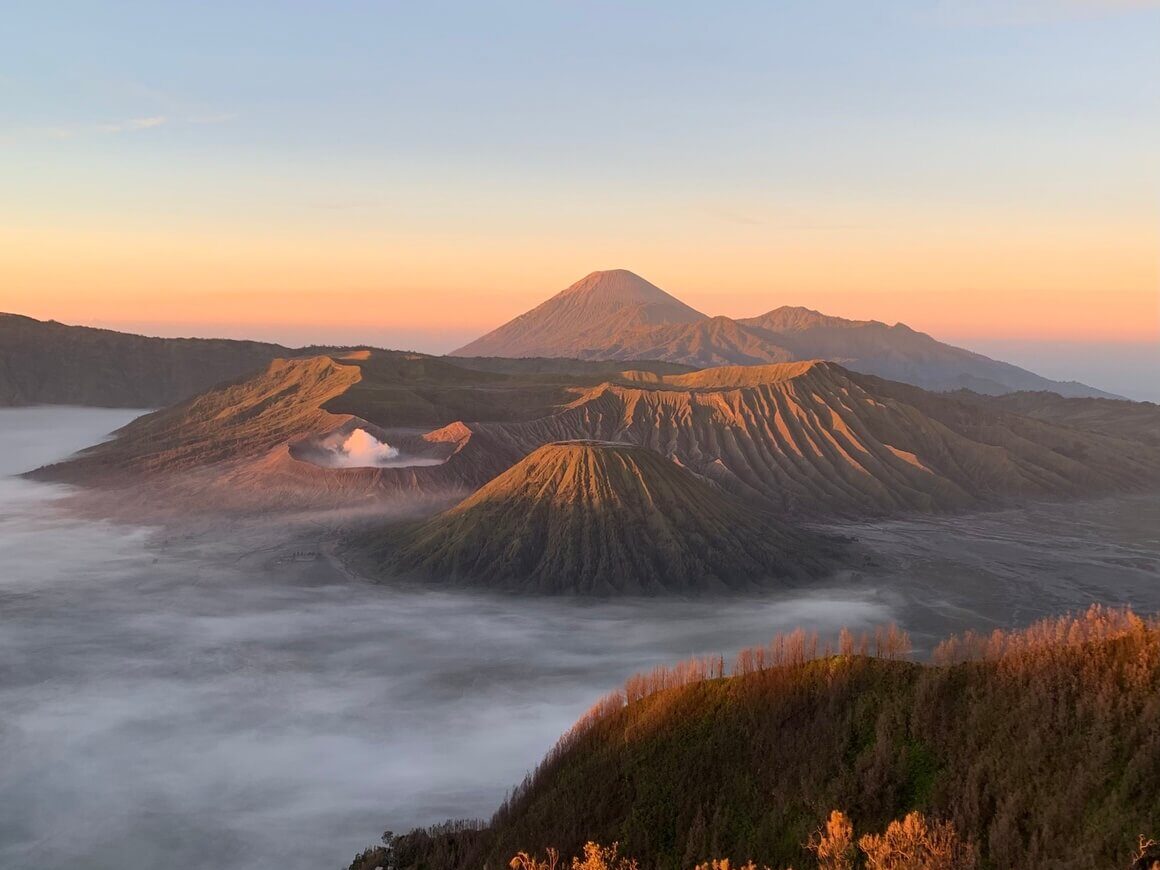
Photo: @joemiddlehurst
- Size: 502 km²
- Location: East Java
- Cost of Entrance: 220,000 or 320,000 IDR (weekdays or weekends)
Located in East Java, four hours from the city of Surabaya is the Bromo Tengger Semeru National Park. This national park is quickly becoming a popular location for backpackers in nearby Bali who want to visit Indonesia’s best volcanoes and witness one of the best sunrises in the country.
Bromo Tengger Semeru National Park is situated within a complex region of volcanism which created an astonishing natural successive formation of volcanoes. The park’s main feature is the Tengger caldera (formed by a giant volcanic explosion itself some 45,000 years ago) which now contains five volcanoes: Mount Bromo, Mount Batok, Mount Kursi, Mount Watangan and Mount Widodare.
From the best viewpoint, Mount Bromo (which is the central volcano in the Tengger Caldera) aligns with Java’s giant Mount Semeru in the background. Not only this but at sunrise, a magical mist forms over what is officially described as Indonesia’s only sand sea. This creates arguably one of the best photographable natural landscapes in the world.
Once you’ve seen the sunrise over the Bromo Tengger Semeru National Park you can head on down to the sand sea yourself and explore the vast landscape on ATVs, motorbikes or foot. Next, you can conquer the relatively easy hike up to Bromo’s crater and peer inside the bubbly cauldron within.
Many visitors to Bromo Tengger Semeru National Park take a combined tour of Mount Bromo and Mount Ijen from Bali or Surabaya which is what I did during my travels through Indonesia. There is no doubt that Mount Ijen (which is a nearby volcano with an impressive crater) and Bromo Tengger Semeru National Park are two of the best places to visit in this wonderful country.
Note: You can also explore the sand sea on horseback but due to our personal views here on ethical animal tourism, I will suggest that you don’t take part in this.
Where to Stay Near National Park
Gubuk Ndeso Homestay is a good choice for a place to briefly rest your head before heading to Mount Bromo just 14km away on that VERY early morning rise. The staff at Gubuk Ndeso Homestay can help you with all your needs and even provide a jeep tour of Mount Bromo.
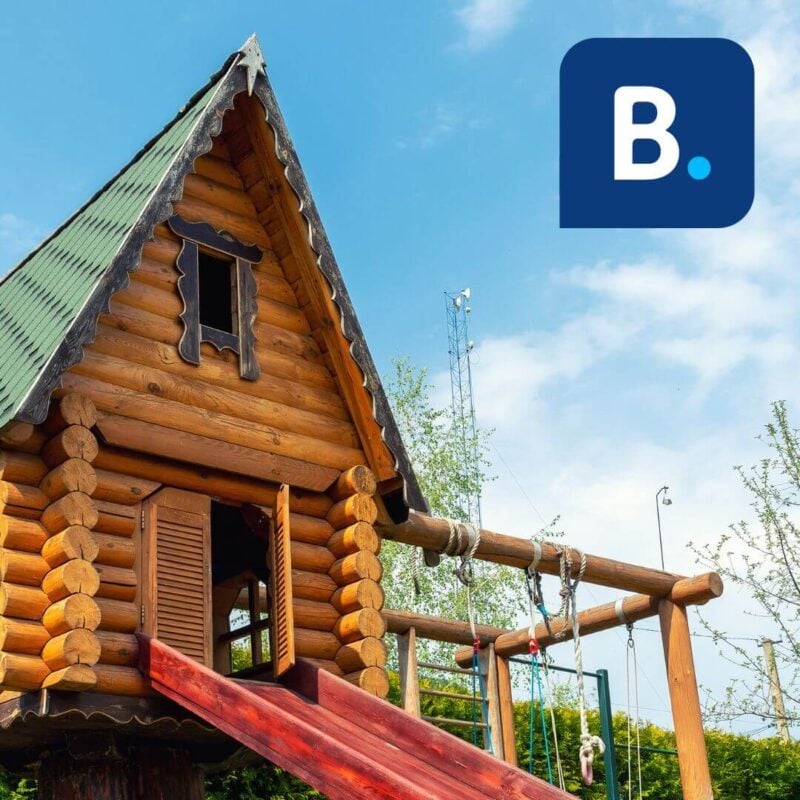
Get 15% OFF when you book through our link — and support the site you love so dearly 😉
Booking.com is quickly becoming our go-to for accommodation. From cheap hostels to stylish homestays and nice hotels, they’ve got it all!
View on Booking.com5. West Bali National Park
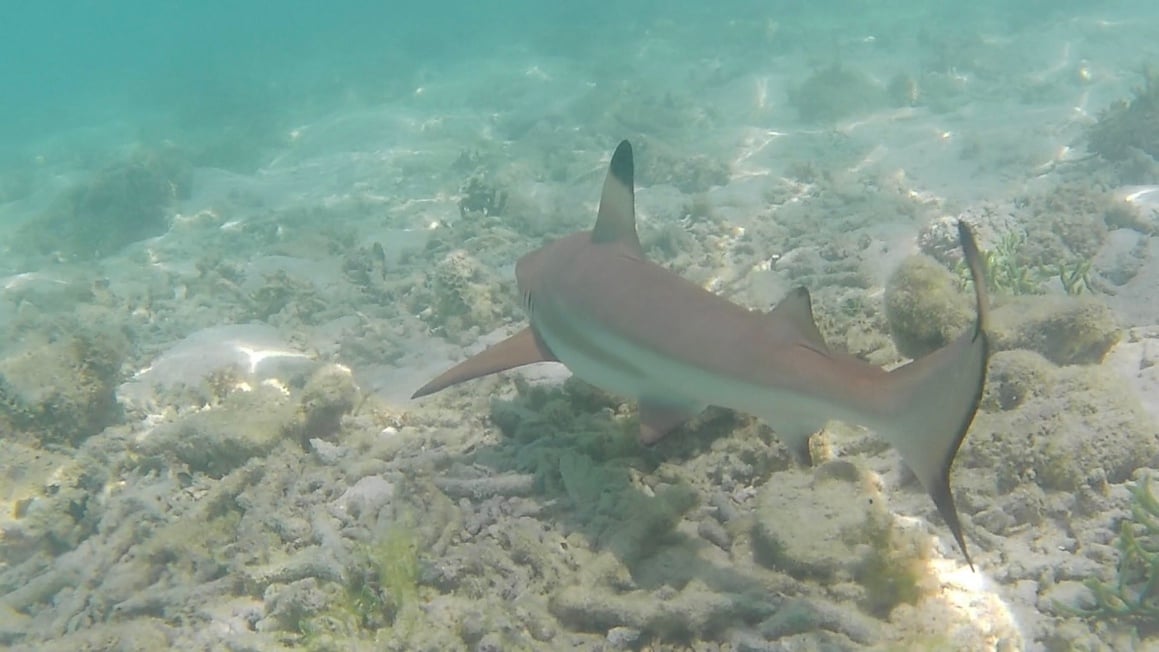
- Size: 190 km²
- Location: Buleleng, Northwest Bali
- Cost of Entrance: 200,000 or 300,000 IDR (weekdays or weekends)
West Bali National Park is located at Bali’s most northwestern point, just around 8km away from the neighbouring giant island of Java. It was originally established in 1941 with the primary aim of protecting the endangered Bali tiger. Unfortunately, by this time the Bali tiger was already extinct, however, the park has provided a safe haven for many other endangered species on the everchanging and overrun island of Bali.
For tourists who are staying in Bali and want to visit a nearby national park, the West Bali National Park is a fantastic choice to get your nature fix whilst on holiday. It is surprisingly the only national park on the entire island!
In West Bali National Park there are over 160 species of birds to spot with the endangered Bali Starling being the most recognisable and targetted species for keen bird-watchers. As the park is blessed with a large coastline, those who want to go snorkelling and diving in Bali often come here to swim in the crystal-clear waters and spot some of the marine life that are teeming in and around this less-crowded area of Bali.
Other activities that are popular in West Bali National Park include embarking on treks through the tropical jungle and kayaking through the mangrove forests that surround the park.
Where to Stay Near West Bali National Park
If you want to stay in West Bali National Park, I recommend heading to NusaBay Menjangan. This resort is the only place situated within West Bali National Park so it’s a very exclusive and unique place to stay. Located on the northeastern coast of the park, there is some excellent snorkelling and diving here right on your doorstep.
Other Parks in Indonesia
Ok, so that top five is pretty tough to beat. But, if you still haven’t found the park for you, or you are just looking for more of the same, check out these next four amazing parks in Indonesia! I’ve got some more of Indonesia’s most beautiful places for you to discover.
6. Tanjung Puting National Park
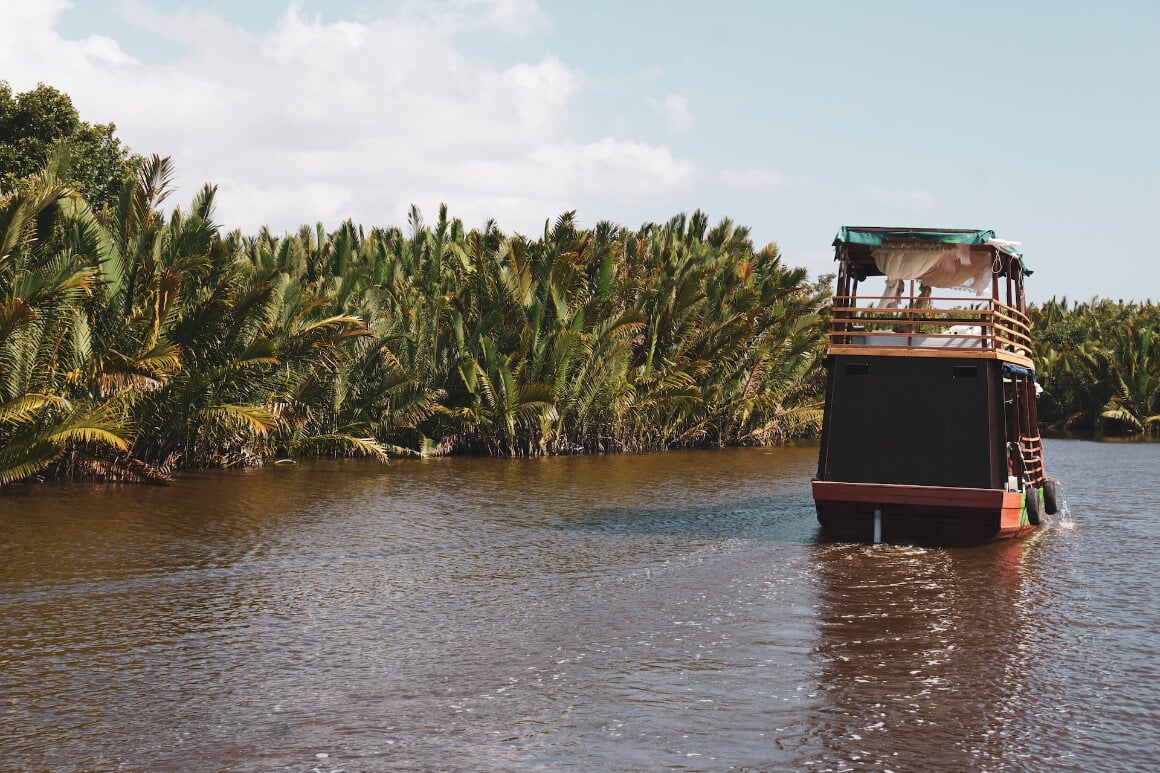
- Size: 4,150 km²
- Location: Central Kalimantan, Borneo
- Cost of Entrance: 150,000 IDR
Declared a national park in 1982, Tanjung Puting National Park covers a decreasing but still vast area of central and southern Borneo with a swampy peat forest and tropical heath. Indonesian Borneo is not as popular for tourism as its Malaysian counterpart but Tanjung Puting Park boasts an extraordinary array of species, biodiversity and varied ecosystems.
The number one reason to go to Tanjung Puting National Park is to pay a visit to the Orangutan Sanctuaries, namely the famous Camp Leakey. Work at Camp Leakey began over 50 years ago and this centre in Tanjung Puting National Park now stands as one of the globe’s most important Orangutan rehabilitation, conservation and research centres.
Some of the other wild species that you can spot in Tanjung Puting National Park include clouded leopards, river crocs, elephants, and the big-nosed proboscis monkeys (endemic to Borneo) plus hundreds of bird and insect species. Most of this animal spotting is distance done from a distance via jungle trekking or river cruising, which I recommend you look into.
If you plan on visiting Tanjung Puting National Park, I would suggest that you aim to get there between June and September to avoid the hazardous and gloomy Bornean rainy season which runs from October through until May. Not only are conditions unfavourable due to flooding and safety issues, but many species of wildlife are more challenging to spot at this time of year.
Where to Stay Near Tanjung Puting National Park
You will want to base yourself in Kumai and venture up the Kumai River until you reach the park.
Arsela Hotel is a great place to stay that’s close to Kumai and the Kumai River, the gateway to the park. This cute cabin-style hotel is also conveniently located close to the airport and is pretty luxurious for an area like this, I must say.
7. Ujung Kulon National Park
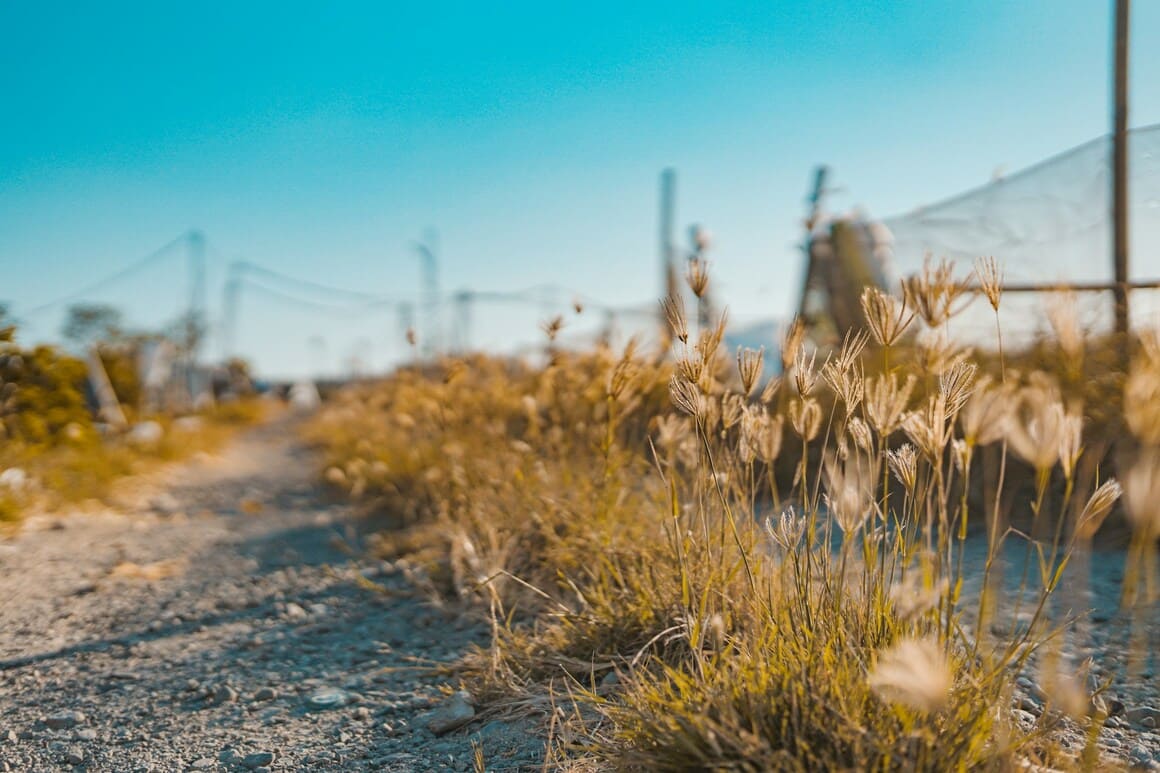
- Size: 496 km²
- Location: Banten, Southwestern Java
- Cost of Entrance: 25,000 IDR
Ujung Kulon National Park in Southwestern Java is not only a UNESCO World Heritage Site but is also one of the only places in the world to witness a wild Rhinoceros. Ujung Kulon National Park is the only place in the world where you can see the endemic Javan Rhinoceros and there are only an estimated 70-80 remaining in the wild… all of which live in this park. Admittedly, sitings are rare but they are possible, and this is the park’s main claim to fame.
The essence of ethical animal tourism is that you prioritise the well-being and freedom of wildlife over the guarantee of sightings, so this is a reality that most tourists are entirely comfortable with. Especially due to the critically endangered status the Javan Rhino unfortunately holds.
Other notable things to do in Ujung Kulon National Park include more wildlife spotting for other rare species such as leopards, jungle trekking and snorkelling or diving around the vast coastline.
To visit Ujung Kulon National Park fly into Jakarta, Indonesia’s capital and then make your way by car or us to the park. Many tourists opt for a guided tour from Carita as Ujung Kulon National Park isn’t the most accessible location in the world.
Where to Stay Near Ujung Kulon National Park
There is a big shortage of places to stay in Ujung Kulon National Park, so most visitors opt to stay in Jakarta or other nearby places and come here on a day trip. If you want to be a tad closer to the action, I can recommend this stunning Airbnb, which is one of the top choices for places to stay in the Banten area.
8. Alas Purwo National Park
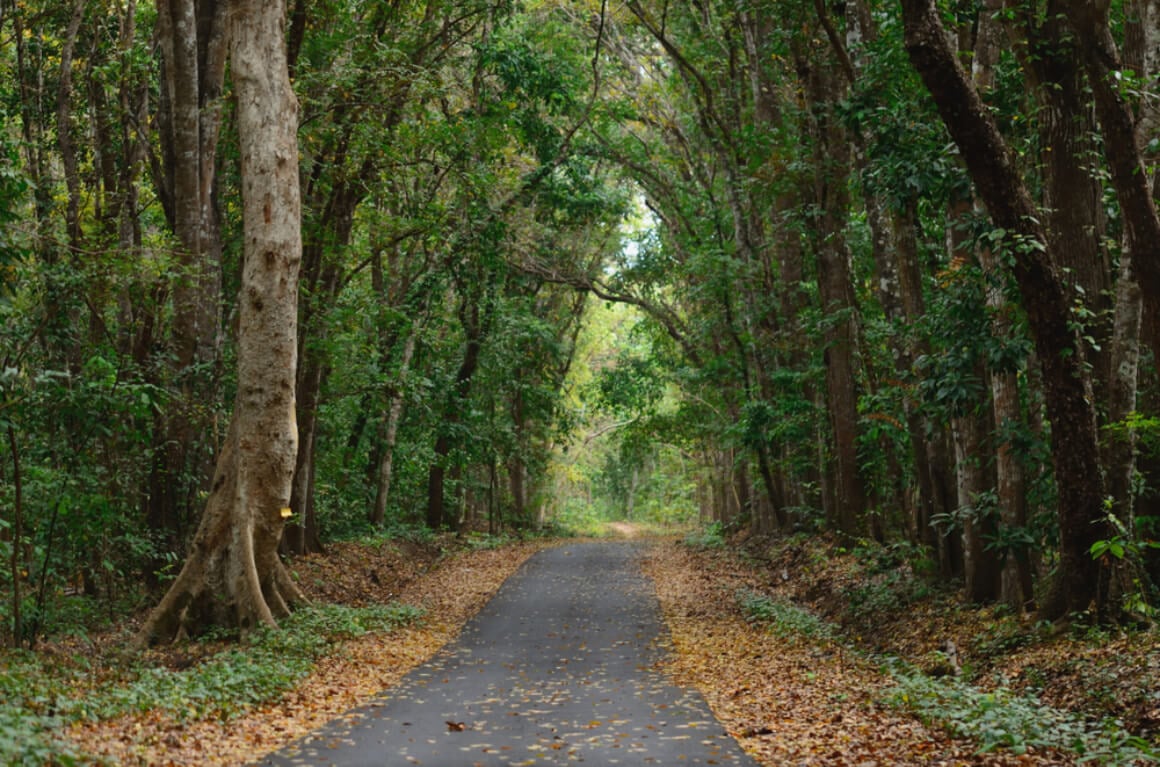
- Size: 434 km²
- Location: East Java
- Cost of Entrance: 5,000 IDR
All the way on the opposite side of the gigantic Java is Alas Purwo National Park. It is located on the easternmost point of Java and is extremely close to Bali.
One of the things that make Alas Purwo National Park so famous is the pristine surfing spot of Plengkung Beach in Grajagan Bay (known as G-Land). Between March and October, surfing conditions at G-Land are nothing short of world-class and it’s not even half as crowded as many of the breaks or beaches in Bali. Be warned though, this post is for expert surfers only!
The best time to visit G-Land or Alas Purwo National Park is definitely during the peak surf season (April-October) whereas November to March are plagued with severe rainfall making most trips unbearably sticky, wet and miserable.
Inside the park, there is an array of other things to do in and amongst the many different landscapes of the ‘ancient forest’. Firstly, the park is well known for its abundance of explorable caves such as Padepokan Cave and Istana Cave which contain ancient carvings and carry cultural significance.
Where to Stay Near Alas Purwo National Park
If you want to stay near G-Land, head to Jawa Jiwa G Land Resort. This rustic glamping is exactly what you need when heading out on a surf holiday in one of Indonesia’s most remote surf spots.
9. Raja Ampat Marine Park
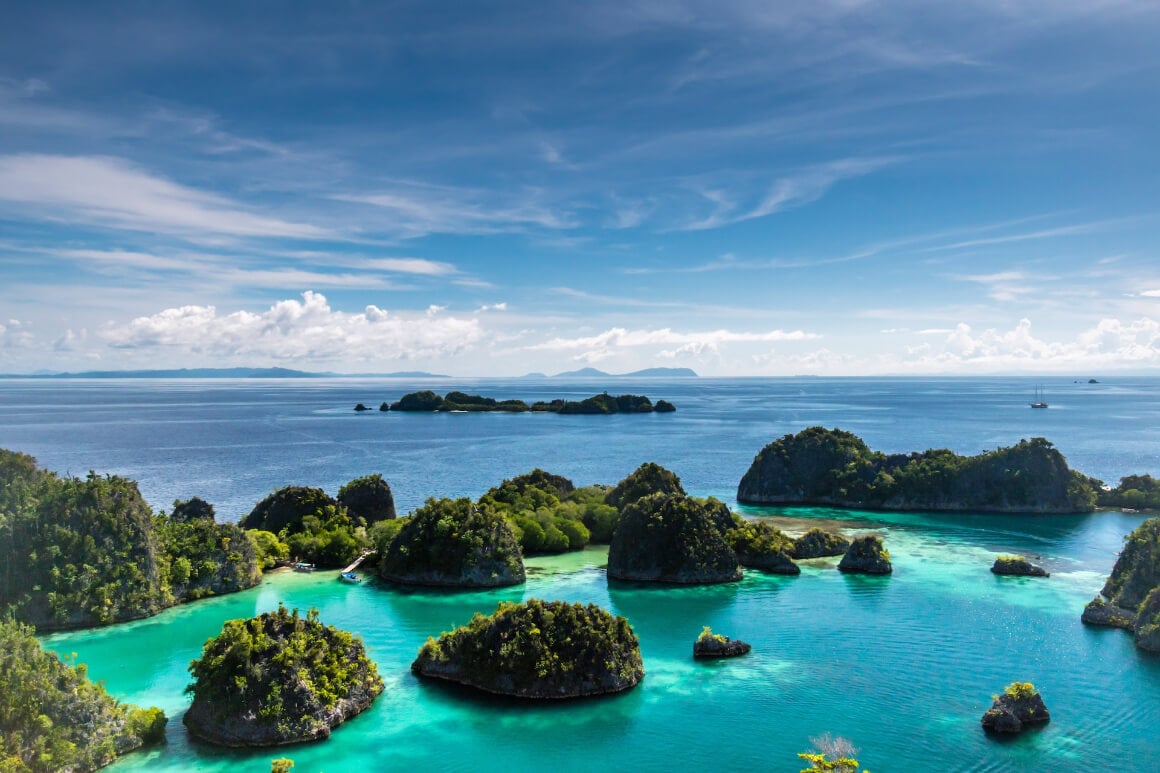
- Size: 45,000 km²
- Location: West Papua
- Cost of Entrance: 1,000,000 IDR
Raja Ampat Marine Park is an archipelago of islands located in West Papua, Indonesia inside the Coral Triangle. Places inside the coral triangle are amongst some of the most biodiverse marine environments in the world, and Raja Ampat Marine Park is no exception.
The coral reeds in Raja Ampat are some of the healthiest and most thriving shallow water environments in the globe. As you can probably imagine, that makes it one of the world’s best snorkelling and diving spots!
In Raja Ampat Marine Park there are over 1,400 species of fish and over 600 separate coral species. In addition, there are a number of endemic and more recognisable species here in abundance such as numerous turtle species, dugongs, wobbegong sharks, manta rays and more.
Of course, I can’t mention Raja Ampat without acknowledging the iconic viewpoint of the islands in Raja Ampat that appears on the back of the 100,000 Indonesian Rupiah banknote (the largest note in Indonesia). This viewpoint is not only one of the most spectacular in Indonesia but also possibly the world.
The months between October and April are the most favourable time of year to visit Raja Ampat Marine Park as this coincides with the dry season and also the best snorkelling and diving conditions.
Where to Stay Near Raja Ampat Marine Park
Methos Homestay offers a unique, rustic and local experience when visiting Raja Ampat Marine Park. This overwater bungalow in Raja Ampat is basic but beautiful. It’s so exceptionally located that you can wake up and jump straight into one of the most amazing marine environments in the world; what a dream.
Get Insured BEFORE Visiting Indonesia
ALWAYS sort out your backpacker insurance before your trip. There’s plenty to choose from in that department, but a good place to start is Safety Wing.
They offer month-to-month payments, no lock-in contracts, and require absolutely no itineraries: that’s the exact kind of insurance long-term travellers and digital nomads need.
SafetyWing is cheap, easy, and admin-free: just sign up lickety-split so you can get back to it!
Click the button below to learn more about SafetyWing’s setup or read our insider review for the full tasty scoop.
Final Thoughts on National Parks in Indonesia
So there we have it, folks. That was the top nine national parks in Indonesia. There are many other great national parks in this giant country, so if I’ve missed out on your favourite, drop it in the comments below!
If you are planning on visiting Indonesia, then you CANNOT skip out on getting over to Komodo National Park. The Komodo dragons are simply iconic and there are a whole host of other amazing activities such as hiking and epic scuba diving in Komodo that it’s basically a no-brainer.
If you’re not wanting to stray much further than Bali, I can recommend taking a weekend trip to either of the neighbouring islands of Bali. Either head East to Bromo Tengger Semeru National Park in Java and marvel at the sensational sunrise at Bromo or go West to Mount Rinjani National Park in Lombok. This makes for the best volcano hike in all of Southeast Asia and is a guaranteed mad adventure.
I’ll sign off by reminding you to travel ethically, responsibly and sustainably. Where possible, do your research to find ethical tour companies, choose eco-centred services and DON’T LEAVE A TRACE!
There are many great organisations such as the Friends for National Parks Foundation and many more which do charitable work to help preserve these natural beauties through conservation, funding and reforestation. Without NGOs like the FFNP Foundation, these parks would suffer tremendously, so they are worth supporting.
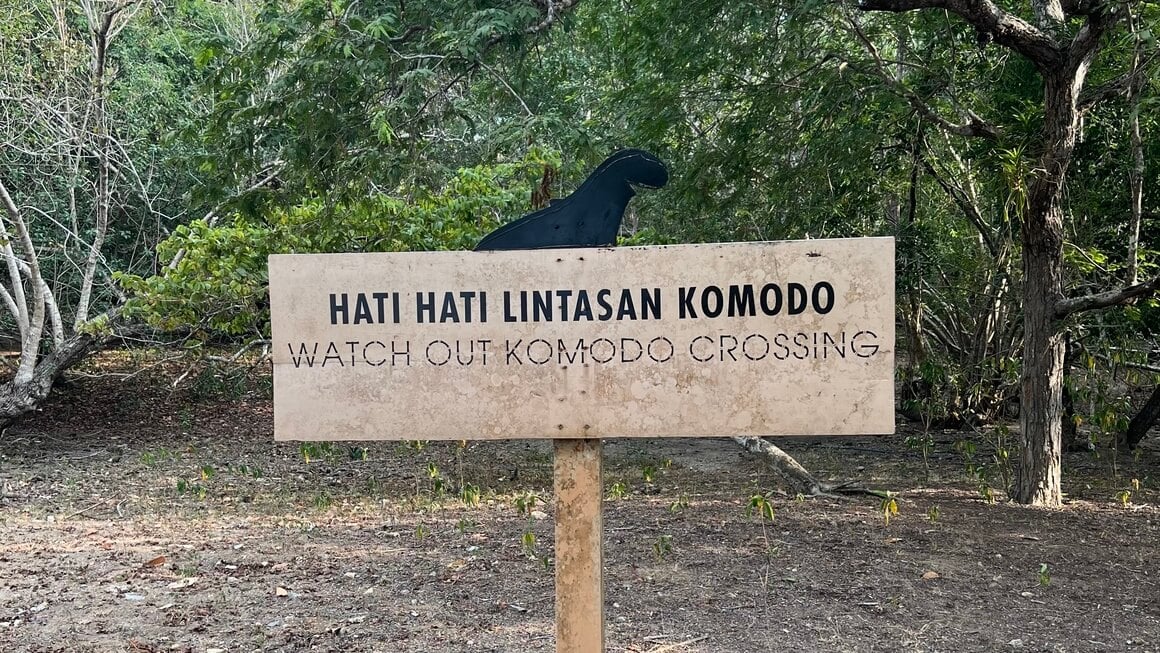
Photo: @joemiddlehurst
Buy Us a Coffee!
A couple of you lovely readers suggested we set up a tip jar for direct support as an alternative to booking through our links. So we created one!
You can now buy The Broke Backpacker a coffee. If you like and use our content to plan your trips, it’s a much appreciated way to show appreciation 🙂



